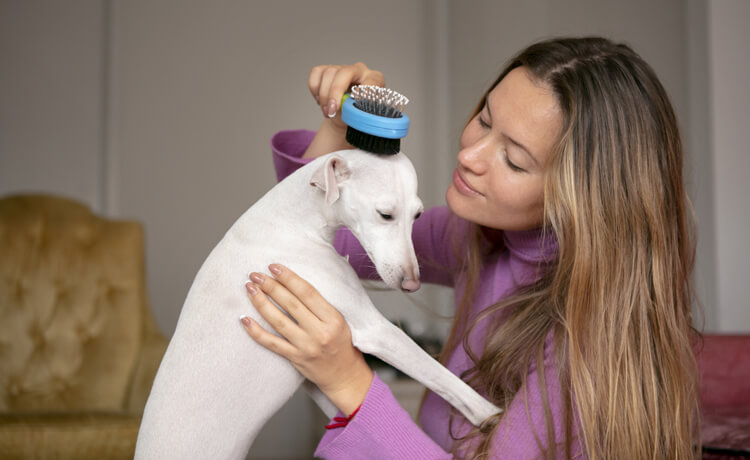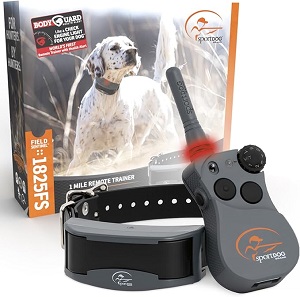
How to Take Care of Your Dog’s Coat and Skin
A healthy coat and skin are crucial to your dog’s overall well-being. Proper grooming, regular care, and attention to their skin’s needs not only ensure your dog looks good but also prevents many common skin issues. Whether you have a short-haired or long-haired breed, regular maintenance is necessary for a variety of reasons, including hygiene, comfort, and health.
In this guide, we’ll go over everything you need to know to take care of your dog’s coat and skin, from grooming routines to treating skin conditions.
1. Regular Brushing
Brushing your dog’s coat is one of the most important aspects of maintaining healthy skin and fur. It not only helps remove loose hair and debris but also stimulates the skin, improving circulation and distributing natural oils that keep the coat shiny and moisturized.
1.1. Choose the Right Brush
- Short-haired dogs: A bristle brush or rubber brush is ideal for short-coated dogs. These brushes remove loose hairs and debris while gently massaging the skin.
- Long-haired dogs: A slicker brush or a pin brush works well to prevent matting and tangles. These types of brushes are effective for detangling and removing dead hair from long coats.
- Double-coated dogs: For breeds like Huskies or German Shepherds, an undercoat rake is essential. This tool removes the dense undercoat during shedding season.
1.2. Brushing Frequency
Essentials for Your Newly Adopted Pet
Welcoming a shelter pet into your life is a beautiful journey. Here are some handpicked items to help your new friend feel safe, loved, and right at home:
- Short-haired dogs: Brush once or twice a week.
- Long-haired dogs: Brush every day to prevent mats and tangles.
- Dogs with heavy shedding: Some dogs, especially during shedding seasons, may require daily brushing to manage the loose hair.
2. Bathing Your Dog
Bathing is an essential part of maintaining a clean and healthy coat, but it’s important to strike the right balance. Over-bathing can strip your dog’s skin of its natural oils, while infrequent baths can lead to buildup of dirt, oil, and bacteria.
2.1. How Often Should You Bathe Your Dog
- Active dogs: If your dog is frequently outside or engages in messy activities, a bath every 4 to 6 weeks is ideal.
- Indoor dogs: If your dog spends most of their time indoors, bathing once every 6 to 8 weeks may be sufficient.
- Dogs with skin issues: Some dogs, especially those with allergies or skin conditions, may require more frequent baths using special medicated shampoos recommended by your vet.
2.2. Choosing the Right Dog Shampoo
Use a gentle, dog-specific shampoo that is formulated to maintain their skin’s pH balance. Avoid human shampoos as they can be too harsh and dry out your dog’s skin. For dogs with allergies or sensitive skin, consider hypoallergenic or oatmeal-based shampoos, which soothe irritation and inflammation.
2.3. Bathing Technique
- Lukewarm water: Use lukewarm water to avoid irritation from water that is too hot or too cold.
- Thorough rinsing: Make sure to rinse thoroughly after applying shampoo, as leftover residue can cause dryness or irritation.
- Drying: Gently pat your dog dry with a towel or use a hairdryer on the lowest setting if your dog is comfortable with it. Be careful not to rub the coat too hard, as this can cause friction and lead to matting in long-haired dogs.
3. Nail Trimming
Although not directly related to the coat, keeping your dog’s nails trimmed is a critical aspect of grooming. Overgrown nails can cause discomfort, lead to injury, and affect your dog’s walking posture.
3.1. How Often Should You Trim Your Dog’s Nails
- For most dogs, trimming every 2 to 4 weeks is sufficient.
- If you hear your dog’s nails clicking on hard floors, they’re likely overdue for a trim.
3.2. Nail Trimming Tips
Use a dog-specific nail trimmer or a nail grinder. If you’re unsure about trimming your dog’s nails, consult a groomer or vet for guidance. Be careful to avoid cutting the “quick,” the blood vessel inside the nail. If you accidentally cut it, apply styptic powder to stop the bleeding.
4. Ear Cleaning
Your dog’s ears can harbor dirt, moisture, and bacteria, leading to infections if not cleaned regularly. Dogs with floppy or long ears, such as Cocker Spaniels and Basset Hounds, are especially prone to ear issues.
4.1. Signs of Ear Problems
- Redness or swelling inside the ear
- Unpleasant odor
- Excessive scratching or rubbing of the ears
- Discharge (brown, yellow, or bloody)
4.2. Cleaning Technique
- Use an ear cleaner designed specifically for dogs. Avoid using cotton swabs, as they can push dirt deeper into the ear canal.
- Gently pour the solution into the ear, massage the base, and allow your dog to shake their head to expel debris. Wipe the ear flap and canal with a soft, damp cloth.
5. Skin Health and Moisturization
Keeping your dog’s skin moisturized is important, especially during the colder months when the air is dry. Dry skin can lead to flaking, itching, and discomfort, making your dog more prone to scratching or developing infections.
5.1. Moisturizing
- Consider using a dog-safe moisturizing spray or lotion if your dog has dry skin. Oatmeal-based lotions or coconut oil are natural alternatives that can help soothe irritation and provide hydration.
- Ensure the moisturizer is safe for dogs, as some human products contain ingredients that can be toxic to pets.
5.2. Allergies and Skin Conditions
If your dog suffers from chronic dry skin, itching, or hot spots, consult your vet. Skin conditions could be caused by allergies, flea infestations, or infections. Your vet might recommend medicated shampoos, dietary changes, or other treatments.
6. Flea and Tick Prevention
Fleas, ticks, and other parasites can cause significant discomfort and lead to skin infections. Keeping your dog protected from these pests is essential for maintaining healthy skin and a shiny coat.
6.1. Flea and Tick Preventive Treatments
- Topical treatments: These are applied to the skin and provide month-long protection against fleas and ticks.
- Oral medications: These are given in pill form and work systemically to kill fleas and ticks.
- Collars: Flea and tick collars are another option, providing long-term protection for your dog.
Regularly check your dog’s coat, especially after walks or outdoor activities, for signs of fleas, ticks, or other irritants. Removing ticks promptly is crucial to prevent the transmission of diseases such as Lyme disease.
7. Regular Vet Checkups
Routine vet visits are key to ensuring that your dog’s coat and skin remain healthy. Your veterinarian can help detect skin issues early, including infections, allergies, or parasites. They may also recommend specific treatments or products suited to your dog’s skin type and breed.
7.1. Skin Allergy Testing
If your dog shows signs of chronic itching, hot spots, or skin irritation, your vet may recommend allergy testing to determine the cause. Many dogs suffer from allergies to environmental factors (like pollen or dust mites) or certain ingredients in their food.
Conclusion
Taking care of your dog’s coat and skin requires a combination of grooming, cleaning, and preventive care. Regular brushing, bathing, nail trimming, and ear cleaning all play essential roles in keeping your dog healthy and comfortable. Additionally, maintaining skin moisture, preventing parasites, and visiting the vet regularly will help ensure that your dog’s coat stays shiny and their skin stays free from irritations.
By staying attentive to your dog’s grooming needs and seeking veterinary advice when necessary, you can help them lead a comfortable, healthy life with a beautiful, well-maintained coat.
This guide provides a comprehensive overview of the steps and considerations for keeping your dog’s coat and skin in top condition, ensuring their overall health and happiness.
Affiliate Products
We may earn a small commission when you shop through our links — it helps us keep sharing love and care for every dog out there, at no extra cost to you.
Up to 75% Discount

Dog Collar with Health Monitoring
BUY NOW »
Up to 55% Discount

Luxury Faux Furhuge Napping Bed
BUY NOW »

